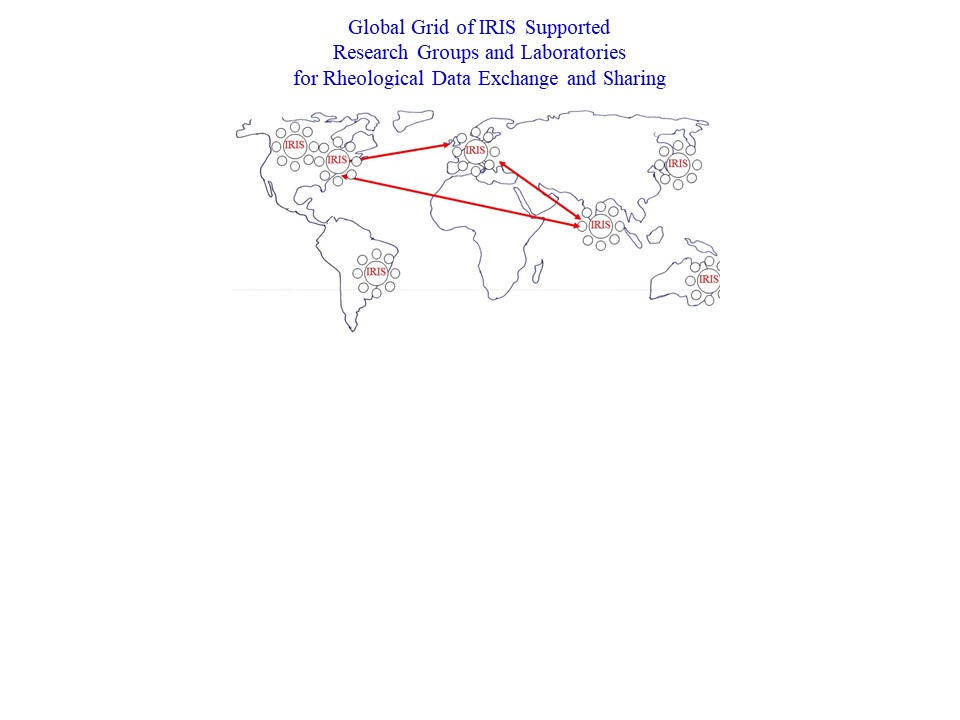
"IRIS" is the abbreviation for Interactive Rheology Information Systems.
IRIS's tools are uniquely easy to use for sharing data. Especially when making use of interactive data plotting. For example, one laboratory might prefer a certain type of data plotting, while your laboratory is accustomed to another type of plotting. This sounds like the makings of a real headache, but it's not. The interactive IRIS simply converts any incoming data to your preferred mode of graphical presentation, orally and in written reports. Conversion is instantaneous and without any loss of accuracy. This applies to a data exchange using the interactive IRIS format. However, data can equally well be shared in the IRIS-generated ASCII format or in an IRIS-generated spreadsheet.
IRIS's central data repository works in much the same way. After retrieval from the central data library, data might initially look confusing -- but the interactive IRIS plotting will convert the data to your preferred formatting, creating a comfort level that allows you to reach a deeper understanding using previous experience and intuition.
In order to use IRIS for multi-site rheological data management, we suggest locating two IRIS PCs (personal computers with IRIS installed and activated) at each site. One IRIS PC for the rheology laboratory, and a second IRIS PC for one of the users of the rheological data. Installation of IRIS and its activation occur remotely. Tutorial support can be arranged.
Two-Tier Zoom-Tutorials: The initial installation of the multi-license and annual renewals are preferably combined with a tutorial. The tutorial will adopt the teaching style the Amherst Rheology Course (ARC), but will be much shorter. Presentations will be shared in the typical Zoom mode. Presentations can be viewed on any type of computer, Mac or PC, or with the projection system in a conference room. Two-Tier: As in ARC, participants should bring a separate computer, a MSwindows operated PC. On this separate PC, IRIS should be installed and ready for joint exercises. Having such an independent PC makes a big difference for the participants of the tutorial. It guarantees an interactive environment for the tutorial. Most of the tutorial will be spent jointly with the interactive graphics tools of IRIS with the intention to put these graphics tools "at the finger tips" of the participants. In this way participants get ready for rheology anywhere/any time and give support to a wider community.

"IRIS" is the abbreviation for Interactive Rheology Information Systems.
|
|